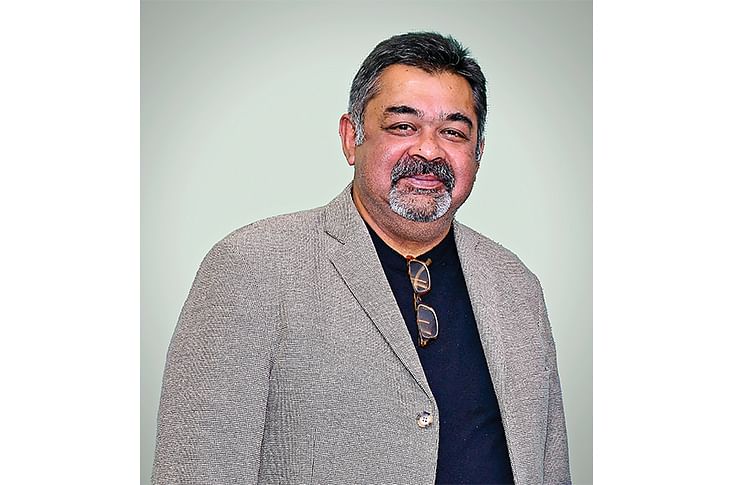Fixing driver drowsiness and distraction
The emergence of vision-based technologies are beginning to hold promise for safer drivers on roads.
As India strives to become a global leader in economic growth and technological advancements, one issue continues to cast a shadow over the nation's progress: road accidents. The alarming increase in road accidents in recent years are largely attributed to 'human error,' and, two major contributing factors are driver drowsiness and distraction. These issues significantly threaten road safety, leading to numerous fatalities and injuries. However, there is hope on the horizon in the form of vision-based technologies that have the potential to address these problems effectively. In this article, we explore how these cutting-edge technologies can play a pivotal role in mitigating the challenges of driver drowsiness and distraction, making Indian roads safer for all.
 Durgadutt Nedungadi, SVP - India and International Business, Netradyne.
Durgadutt Nedungadi, SVP - India and International Business, Netradyne.
Dangers of driver drowsiness and distracted driving
In recent times, India has observed a surge in accidents resulting from drivers dozing off while driving. Long working hours, stressful lifestyles, and irregular sleep patterns have contributed to this alarming rise in driver drowsiness. Fatigued drivers are more prone to accidents as their reaction times are significantly impaired, leading to the inability to make crucial split-second decisions on the road.
With the rapid proliferation of smartphones and other devices, driver distraction has become a perilous issue on Indian roads. Drivers engaged in texting, using social media, or making phone calls while driving are putting their lives and the lives of others at risk. While there are rules in India that ban the use of phones while driving, they are often not followed.
Introducing vision-based technology solutions
Vision-based technologies, powered by artificial intelligence (AI) and machine learning, have emerged as a promising solution to combat driver drowsiness and distraction. These advanced systems utilize cameras, sensors, and sophisticated algorithms to monitor drivers' behavior in real-time, providing timely alerts and assistance when necessary.
A critical application of vision-based technologies is the real-time detection of driver drowsiness. Advanced Driver Monitoring Systems (DMS) use intelligent cameras to track drivers' blinking patterns, yawning, and body language to assess their attentiveness. When signs of drowsiness are detected, the system can trigger alerts, encouraging the driver to take a break or rest, thereby preventing potential accidents.
To address the issue of driver distraction, vision-based technologies play a pivotal role in minimising risky behaviours. Through complex algorithms, DMS can identify when drivers engage in activities like texting or using their phones while driving. The system can then intervene by alerting and advising the driver to focus on the road ahead.
Data-driven insights for road safety
Vision-based technologies go beyond immediate assistance and provide valuable data-driven insights for fleet managers and organizations. By collecting and analyzing driver behavior data, the transport ecosystem can identify risky driving patterns and peak times for accidents. This information can be used to implement targeted interventions and design safety policies.
Way forward
Despite the promising potential of vision-based technologies in improving road safety, there are several challenges that must be addressed. For widespread adoption of these life-saving technologies, a collaborative effort involving the government, technology companies, transport service providers, and automobile manufacturers is crucial. Moreover, raising public awareness through campaigns is essential to educate about the advantages of vision-based driver assistance systems and the dangers of driving while tired or distracted.
We, as a nation, must recognize the value and necessity of implementing such systems, and shall treat it as an investment rather than an expense since the value of human lives cannot be quantified. Focusing on implementing Make-In-India technologies tailored explicitly for the country's needs is vital, ensuring they provide superior accuracy. Utilizing systems with low precision and accuracy will deter early adopters, leading to limited usage and hindering progress in road safety.
Durgadutt Nedungadi is SVP - India and International Business at Netradyne.Views expressed are those of the author.
Also read
One person died every three minutes in road accidents in 2022
'Hit from Back' accidents account for 19.5% of road accident fatalities, Govt report reveals
RELATED ARTICLES
The Development and Adoption of Alternative Fuel Technologies Beyond Electric (e.g. Cng, Flex-Fuel) in Two Wheelers
India's two-wheeler industry is exploring CNG, ethanol-blends, and electric options simultaneously, driven by diverse ri...
How India’s Evolving Supply Chains Will Shape the Auto Industry – Expectations from the Upcoming Budget
India's automotive sector faces shipping disruptions, U.S. tariff increases, and critical mineral dependencies while mai...
How Technology, Trust and Conducive Policies are Driving India’s EV Adoption Curve
India's electric vehicle market is accelerating toward mainstream adoption, driven by advanced LFP battery technology, e...






 02 Nov 2023
02 Nov 2023
 6031 Views
6031 Views





 Autocar Professional Bureau
Autocar Professional Bureau




